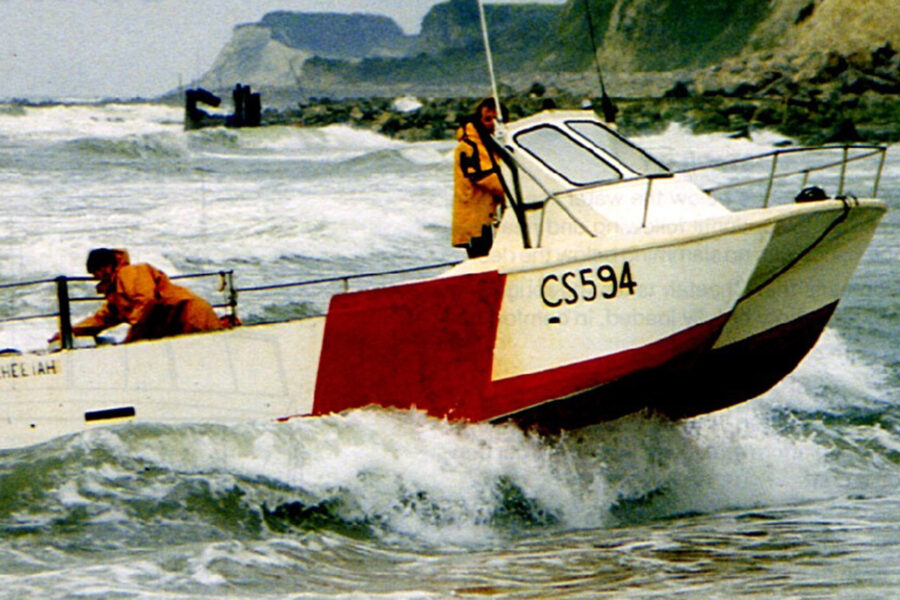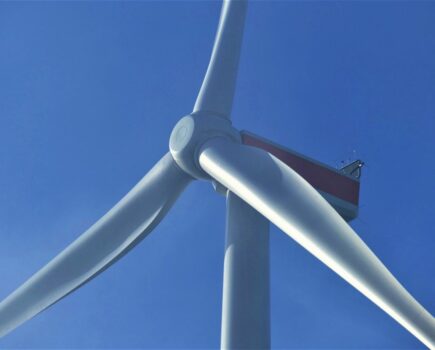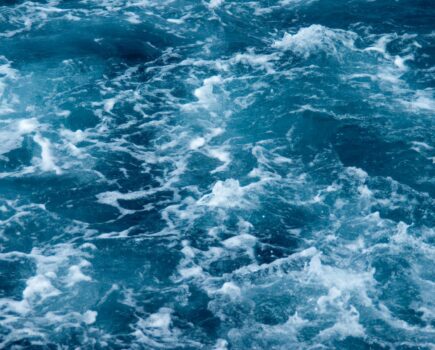Following on from the reader’s letter in FN two weeks ago, where an owner with a vessel on order from Cheetah Marine claimed that any new boat he could build under the revised Code would have reduced stability compared to his previous one, we contacted Cheetah Marine builder and designer Sean Strevens for comment.
Firstly, here is the original letter…
Dear Editor,
Following your recent article from the MAIB on the lessons to be learned from the sinking of the Joanna C and the Nicola Faith, which highlights the importance of vessel stability (Fishing News, 14 July, ‘Do rising costs mean increased risk?’), I would like to bring to your and the readers’ attention to the problems we are having with the new-build standards that ban under-deck petrol fuel tanks for commercial fishing vessels.
We have ordered a new Cheetah Marine catamaran, but despite efforts from Sean Strevens at Cheetah Marine and ourselves to resolve the fuel tank issue, we cannot get this ban lifted.
Cheetah Marine builds survey boats, charter angling boats, passenger-carrying boats, boats for the disabled, and patrol boats like one recently built for the Scottish police. All of these boats are fitted with under-deck tanks, and have been for about 20 years.
Yet with all the safety advantages of fire protection and lowering the centre of gravity these tanks provide, commercial fishermen are not allowed to have them. This I find a matter of discrimination.
I have skippered Cheetah catamarans for the last 27 years from Ventnor. We have to negotiate shore break across the harbour entrance, tidal races and overfalls, all while being exposed to the prevailing South West wind. Occasionally in the tidal races in heavy weather we get knock-up on our sides; at these times we are glad of that fuel weight down under the deck.
Five years ago we had a 9.98m Cheetah catamaran built with twin 225-litre under-deck tanks, giving us almost half a tonne of weight down below the deck. In inclement weather, we always go to sea with full tanks, and can run lighter on fuel in calmer conditions, saving weight and fuel consumption. Apart from the obvious stability advantages, in the case of a fire the inbuilt tanks have fireproof shut-off valves, allowing the fuel to be totally isolated below deck, giving crews plenty of time to put out fires without risk of an explosion.
Cheetah catamarans are built with decks that are sealed for life. This results in a vessel that is very difficult to sink. The fuel tanks need to go in before the deck is put down, and would be very costly to do after the boat is completed.
For the same boat being built today, the fuel weight must be up on the deck. Also with the new scupper height regulations now in force, Cheetah has raised the deck by 100mm to give enough freeboard tolerance, raising the centre of gravity again. If I were to modify my existing boat to meet the new regulation requirements, I probably would be prosecuted by the MCA!
As it stands, after being subject to all of the new regulations that under-15m vessel owners have had to endure, we cannot build a boat as safe as the one we built five years ago. When a government department responsible for safety brings out regulations resulting in boats that are less safe, questions need to be asked.
Geoff Blake Ventnor Haven Fishery
Well-known across the industry, Sean has been building catamarans for three decades. He has now opened a second boatyard in Portugal to cater for EU customers post-Brexit.
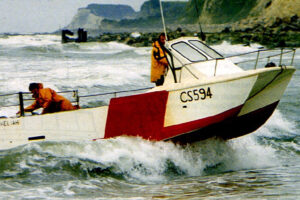
The original Cheetah cat, back in 1990! Designed for beach launching in heavy surf, success of the initial design has now seen nearly 600 catamarans produced by the company.
Sean confirmed his own concerns about the reduction in stability created by the requirement for long-range tanks to be up on deck, as well as by the new deck height above waterline requirement.
He told Fishing News: “The problem is simply that the MCA/ Seafish construction standards are sometimes not suitable or safe because they have to cater for such a wide variety of fishing vessel designs.
“This is especially so for small sealed-deck, outboard-powered GRP vessels. The standards have also chopped and changed over the years. Under-deck fuel tanks, for example, have been in and out of the standards for many years.
“To get over this problem, a type-approved system could be used for production vessels which are the same every time. They would come with an owner’s manual which would help reduce coding costs and time, help surveyors, and help to deter owners from changing their vessel’s general arrangements – in particular, adding extra weight above deck beyond that of the type-approved options.
“All vessels can suffer from changes made by the owners and weight being added. We have all seen in the past vessels with unsuitable new ‘wheelhouses’ added on, that can turn a safe hull design into a dangerous boat. For these vessels, strict rules need to be applied, and the vessels need to be taken off the register if they do not meet stability requirements. However, with a more specific approach to accidents with the changes made for particular designs, especially older traditional vessels, future safety would be better.
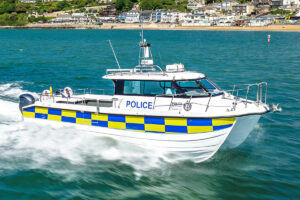
A new Cheetah, fully approved and in code, delivered to the Scottish police recently. If this were a fishing boat, the below-deck fuel tanks, which increase vessel stability, would mean that it would fail its Under- 15m Code inspection, and would not be allowed to go to sea!
“Most accidents are with traditional-design vessels with heavy inboard diesel engines and engine compartments which easily down- flood. Vessels sink or capsize. If a boat could be kept afloat, then the chance of saving lives would dramatically increase.
“For many, many years I have completed consultations and written technical emails to Seafish and the MCA explaining that there are not enough sealed bulkheads and sub-divisions in under-10m vessels to stop them sinking. Sadly, I get very little response and nothing changes within the standards.
“Accidents at sea have not significantly improved and will never improve until the construction standards are revised to include more sub-division, equivalence is accepted for ISO category B craft, and designers/builders can use a type-approved system for production vessels.
“Generalised changes within the standards can have a negative effect on stability, making outboard- powered, decked vessels less stable. Increases in deck height above the waterline, long-range fuel tanks being forced above deck, liferafts having to be on cabin roofs, and an increase in complexity and weight are all leading to a higher vertical centre of gravity.
“In 30 years and nearly 600 Cheetah catamarans built to date, Cheetah has had a first-class safety record, and wants to keep it that way. It’s simple: in general, long- range fuel tanks should be below deck, minimum deck height should be relative to the vessel’s design, minimum freeing port size should be twin 225cm square (or ISO category B on under-7m vessels), and minimum sealed bulkhead sub- divisions should be more than two.
“We now have acceptance from the MCA for our 6.9m x 2.4m series catamaran to maintain its decked vessel category if it meets a minimum height above the waterline of 150mm. This is good and sensible news for owners of this model, who have not made significant alterations to the original design.
“Unfortunately, many cathedral hulls, dories, coast workers and other outboard-powered under-7m vessels which do not meet the 200mm requirement are being classed as open boats and are being forced to close all scuppers and freeing ports.
“The concern is that they are still affected by free surface water if swamped and need quick drains – a compromise on lay-flat pipe drains would get over this problem. A traditional open boat allows deck water to go into the bilge, which is generally central to the keel and below the waterline, helping to maintain stability while the bilge pumps pump out the water. This is not possible on a sealed deck vessel, and should be treated accordingly. The correct height of sealed deck, however, has significant safety advantages over an open boat.
“Using ISO equivalence and lay-flat hose drains for outboard- powered, decked vessels under 7m would solve this problem.
“The original 6.2m surfing up the beach in 1990, with twin 225cm freeing ports, worked perfectly. Since then, we have had to increase this to 3% of bulwark area over the last 10 years, and since 2021 in some boats have had to close them all. The original design worked perfectly and did not need to be changed.
“The latest police Cheetah delivery went to Scotland, with under-deck tanks and twin 225cm square freeing ports. Under-deck fuel tanks in MCA workboat coded vessels are the norm; twin 225cm freeing ports are the norm – it’s only in commercial fishing vessels that these have to be different.
“We are in the very odd position of providing a vessel to one sector of the workboat market that is fully coded and approved, whereas in the fishing sector it would fail and has to be built less safely.
“Cheetah works well with the MCA and its surveyors – however, it is the system which is failing. Hopefully in the future we will see some positive changes which will lead to better safety standards.”
This story was taken from the latest issue of Fishing News. For more up-to-date and in-depth reports on the UK and Irish commercial fishing sector, subscribe to Fishing News here or buy the latest single issue for just £3.30 here.

